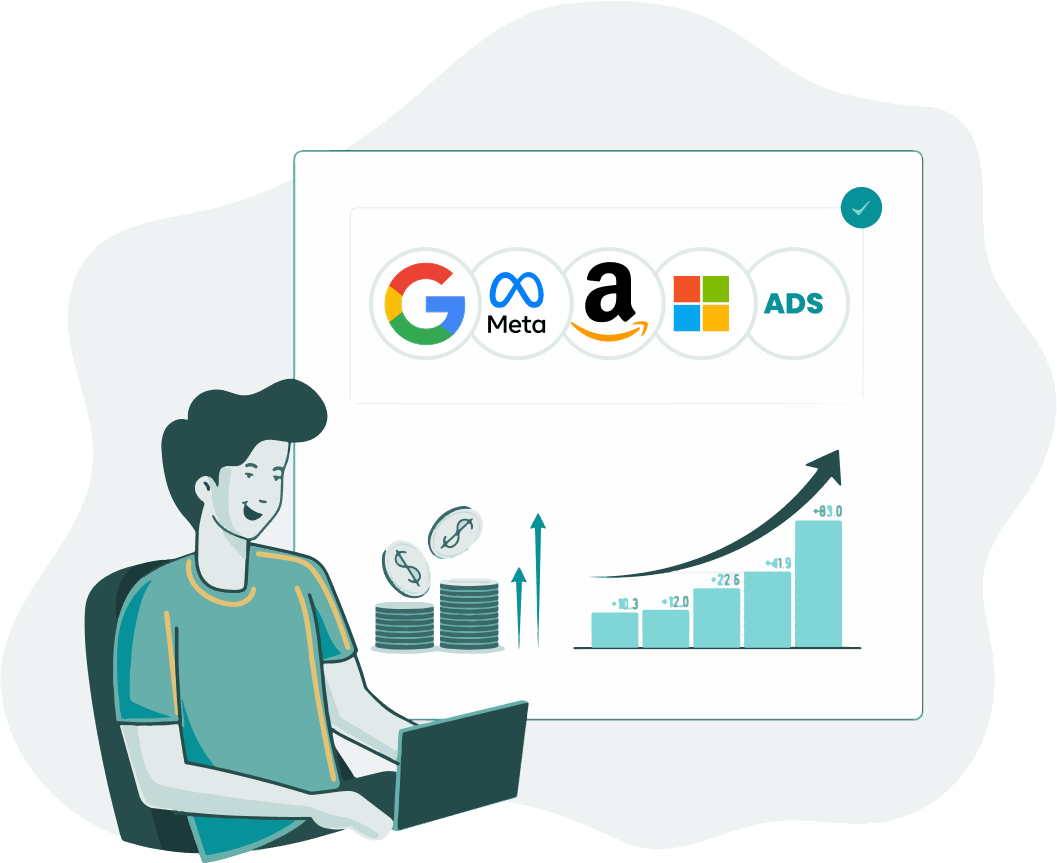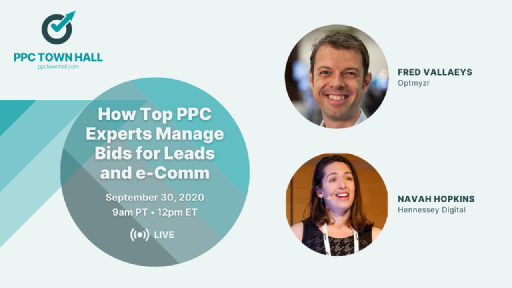During my 5 years as a PPC strategist, I’ve learned that the most common dilemma marketers face is choosing between automated and manual bidding.
While many other factors also come into the picture — budgets and targets, for example — choosing an efficient bidding strategy is the undisputed winner.
So let’s dive right into how we find the solution. Here are 4 proven tips I’ve seen PPC managers use to control automated bidding.
How much can you really rely on Smart Bidding?

On a past episode of PPC Town Hall, Google’s Partner Development Analyst Peter Oliveira said, “Smart bidding uses both aggregated and recent trends, [but] favors what’s been happening recently.”
While Smart Bidding looks more agile, it may not be as robust as you’d like it to be. This is because the automated system may not wait long enough to adjust bids. Those bids might be set based on new patterns, leading to potential anomalies.
So do you rely on Google’s Smart Bidding to get the best results? Or should you roll up your sleeves and take responsibility for manually driving the best results?
In my experience, the answer is a combination of the two.
Experts say that your choice of bidding strategy should depend on how much time you can devote to PPC management and your goals.
But according to a more recent train of thought from our CEO Fred Vallaeys, marketers should train automated bidding strategies to get better results — something likely to resonate with the world’s most renowned PPC practitioners.
As you rely on automated bidding strategies to stay agile (especially in the current scenario), add your own expertise and understanding of the market to strengthen Google’s automation.
The solution: Pick the right automated bidding strategy and train it to get your desired results efficiently. That means feeding it the right settings, like Target CPA and Target ROAS, at a very granular level.
1. Don’t be afraid to switch strategies to get more control

Here’s my golden tip: Don’t set it and forget it.
Automation is only as good as what you feed it. You may start a campaign to achieve one thing, but don’t leave it there. Monitor its performance regularly, and when you don’t see the desired output, you can easily switch to the next strategy.
For example, when you want to generate conversions rather than get clicks, you’d choose the “Maximize Conversions” bidding strategy. After running that for 30 days or exhausting your budget, you can gauge the performance of your campaigns.
When you have a tool like Optmyzr, the next step is to check out performance using the Rule Engine strategy shown below. And if you’ve had enough conversions — say 50 in 30 days — you can switch to a more specific strategy like “Target CPA” or “Target ROAS”.

This is because the campaign is already able to spend more than its daily budget. In that scenario, taking control of the target values for CPA or ROAS can improve performance even further.
2. Get granular

Align campaigns based on the goals and strategies you intend to use for optimization, right from the beginning. Think of it as a more futuristic approach to preparing your campaigns for a bidding strategy like “Target CPA” or “Target ROAS” from the beginning.
If you have different margins for the brand, categories of products, product types, or location targets you’re advertising for, then group them separately.
3. Update your targets

Google allows you to set the target values for “Target CPA” and “Target ROAS” bidding strategies. Make use of this flexibility.
If you set one bidding target for all of your ad groups, it’s akin to expecting all the fingers on your hand to do the same thing.
One target for all your ad groups is likely to limit their performance, and you may also prevent Google’s machine from optimizing the best results for your different ad groups. Instead, optimize your target values based on each ad group’s current performance.
Check out one such strategy ready for you to try in Optmyzr: Optimize Target CPA & Target ROAS.
4. Don’t rule out manual bidding

While automated bidding strategies may work for most of your campaigns, it might not be the solution in every scenario. Keep your options open.
Using Optmyzr, you can set up automation to find campaigns where automated bidding didn’t fare well. Switch them to a control group of campaigns where you can run manual bidding strategies.
Check out the image below showing how to find those campaigns using our Rule Engine:

Conclusion
Automated bidding strategies are a good foundation, but it’s the PPC strategist’s role to make them smarter. Analyze, introspect, and always be prepared to shift bidding strategies if you aren’t moving the needle on your goals.
And as you switch to other bidding strategies, keep in mind that the accumulation of data points over a period of time can guide Google’s engine to drive the best results for you.
Optimizing your strategies on automated bidding isn’t always simple, but Optmyzr can help you shave hours off execution. Our tools layer automation over what the ad engines provide, helping you leverage automated bidding while staying in control.
To try out the Rule Engine strategies in this article and many others, try Optmyzr absolutely free for 14 days.









